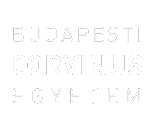Hauser, Zorka (2021) Talking Bodies: A Visual Rhetorical Analysis of Two Prominent Fashion Brands. BA/BSc szakdolgozat, BCE Kommunikáció és Szociológia Intézet, Kommunikáció- és Médiatudomány Tanszék. Szabadon elérhető változat / Unrestricted version: http://publikaciok.lib.uni-corvinus.hu/publikus/szd/Hauser_Zorka.pdf
|
PDF
- Requires a PDF viewer such as GSview, Xpdf or Adobe Acrobat Reader
1MB |
Szabadon elérhető változat: http://publikaciok.lib.uni-corvinus.hu/publikus/szd/Hauser_Zorka.pdf
Absztrakt (kivonat)
The aim of the present thesis is to examine the visual communication of two fashion brands and to compare them by a visual rhetorical analysis. The motive of the research was to disclose the affects advertisements have on people, the messages that can be conveyed and what tool each brand uses for these. The research questions addressed in the paper: RQ1: What effect do fashion brands intend to have on consumers, considering the look of the models and the message of the image itself? RQ2: What difference can be observed between the campaign photos of Calvin Klein and Victoria’s Secret? RQ3: What visual aspects seem to be important for each brand to communicate their message and what feeling do they trigger? The history of rhetoric and the history of visual rhetoric was conferred and displayed how key elements changed throughout the years. The importance of rhetoric putting visual images into significant aspect is shown based on the work of Foss (2004), the relation between visual rhetoric and rhetoric, elaborated by Aczél (2012) and the dimension within this field, the wide range of meanings that can be found in imagery symbols from works if Foss (2005). Moreover, knowledge about new media communication was presented throughout works of Aczél (2004), Carr (2015) and Moreau (2018), where it is explained how people are affected by new media, how enormous data is involved in everyday life and how social media plays an important role. Business models and the presence of brands on social media is elaborated as well by Mohr (2013) among others. The examination of digital fashion communication has an important role in the paper, which was based on the works of Kalbaska (2019) and Nobile (2021). The visual rhetorical analysis based on the 3p revealed answers from a chart of 60 pictures. Each Calvin Klein and Victoria’s Secret contained 30-30 randomly chosen pictures from their Instagram page. The findings of the research lead to the conclusion that even though both brands display lingerie, the communication and the appearance between the brands contain a lot of differences. Calvin Klein tends to emphasize acceptance, their main message is to be yourself and the brand also expresses unusual appearances, such as portrayal of gay couples in their campaign photos. The aim of the products suggests that the person wearing them will look cool and confident in them. Victoria’s Secret tends to focus on femininity and highlighting the most beautiful aspects of the female body. The brand’s main message is to be confident with yourself and to be sexy. Their products are usually alluring and tempting, which conveys the message that every woman can look enticing in their products. Various body types can be discovered in the 30-30 images, a huge number is still skinny, however many plus size and sporty models appear, which leads to the conclusion that all body types are accepted and none of the two brands communicate that only skinny looks are accepted.
| Tétel típus: | BA/BSc szakdolgozat |
|---|---|
| Témakör: | Marketing |
| Azonosító kód: | 14658 |
| Képzés/szak: | Communication and Media Science |
| Elhelyezés dátuma: | 29 Aug 2022 09:34 |
| Utolsó változtatás: | 29 Aug 2022 09:34 |
Csak a repozitórium munkatársainak: tétel módosító lap

